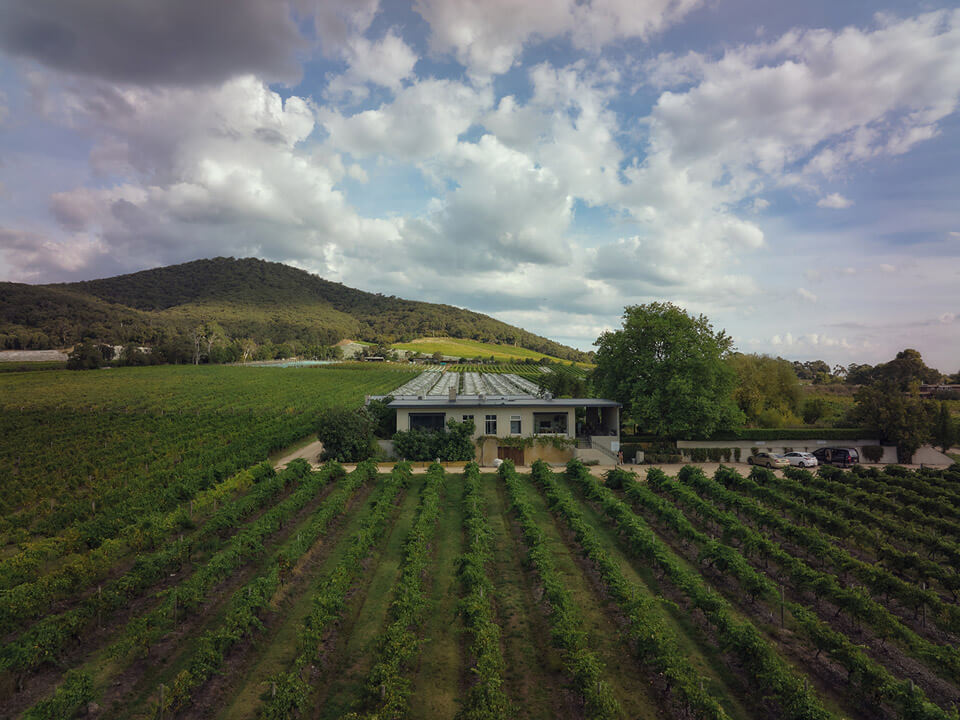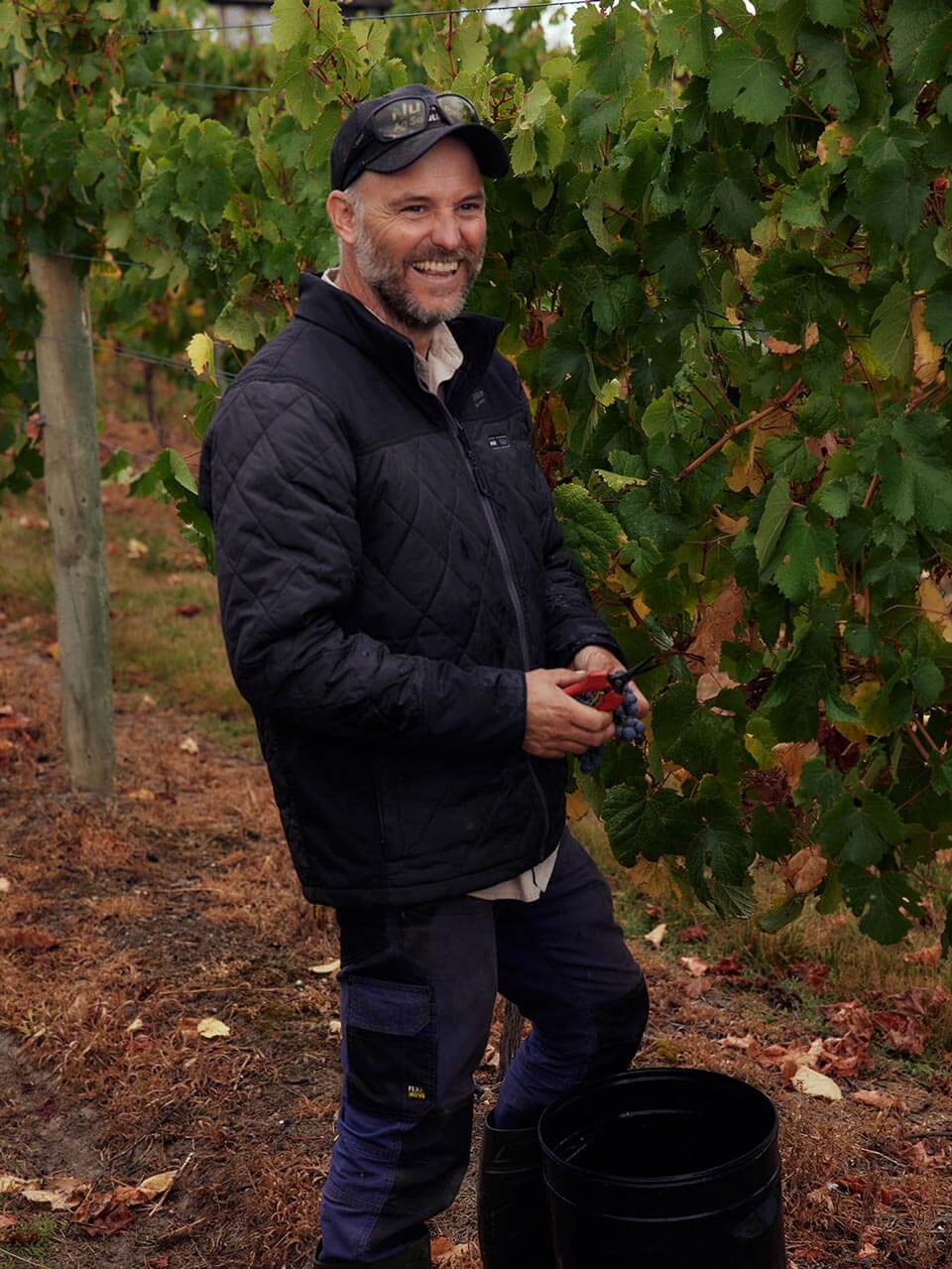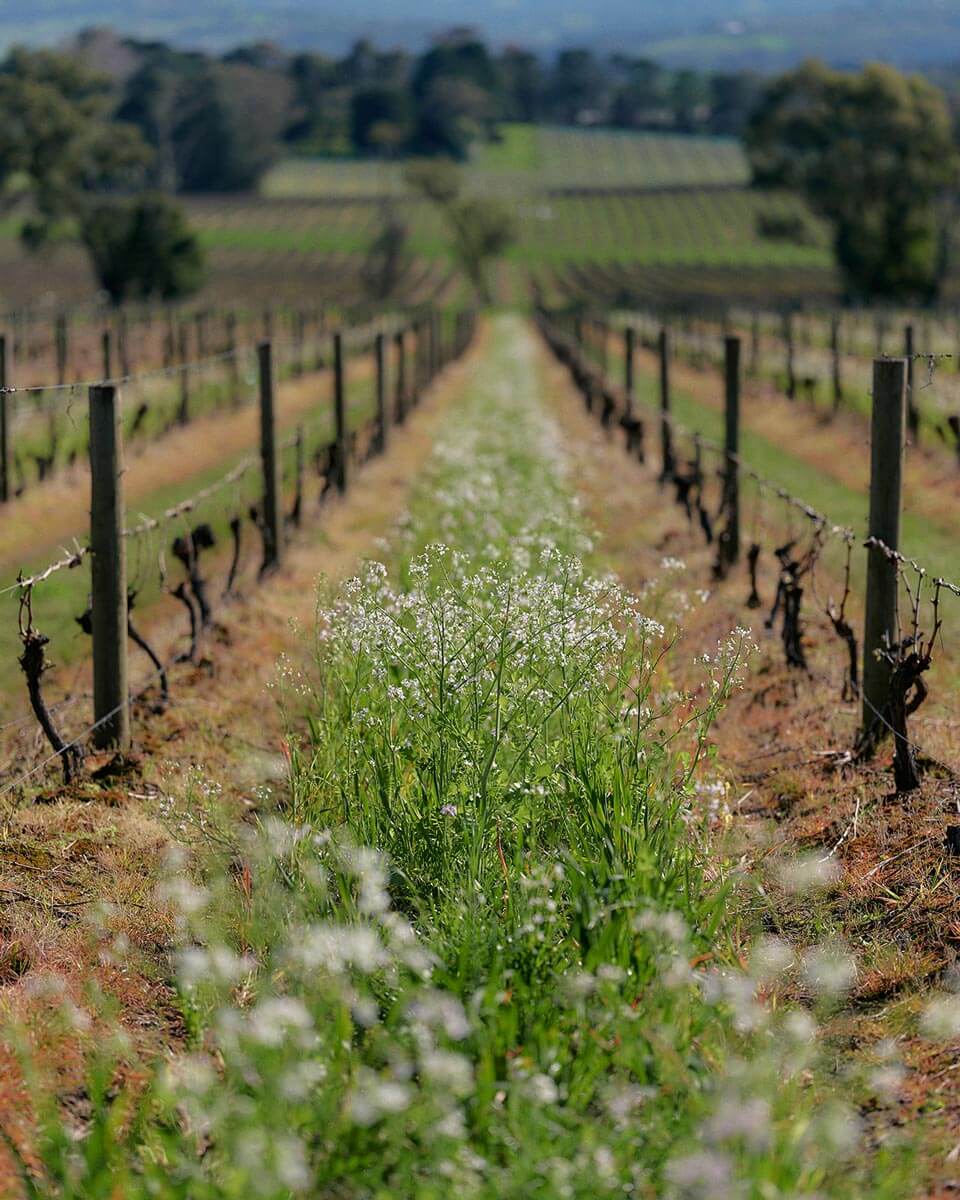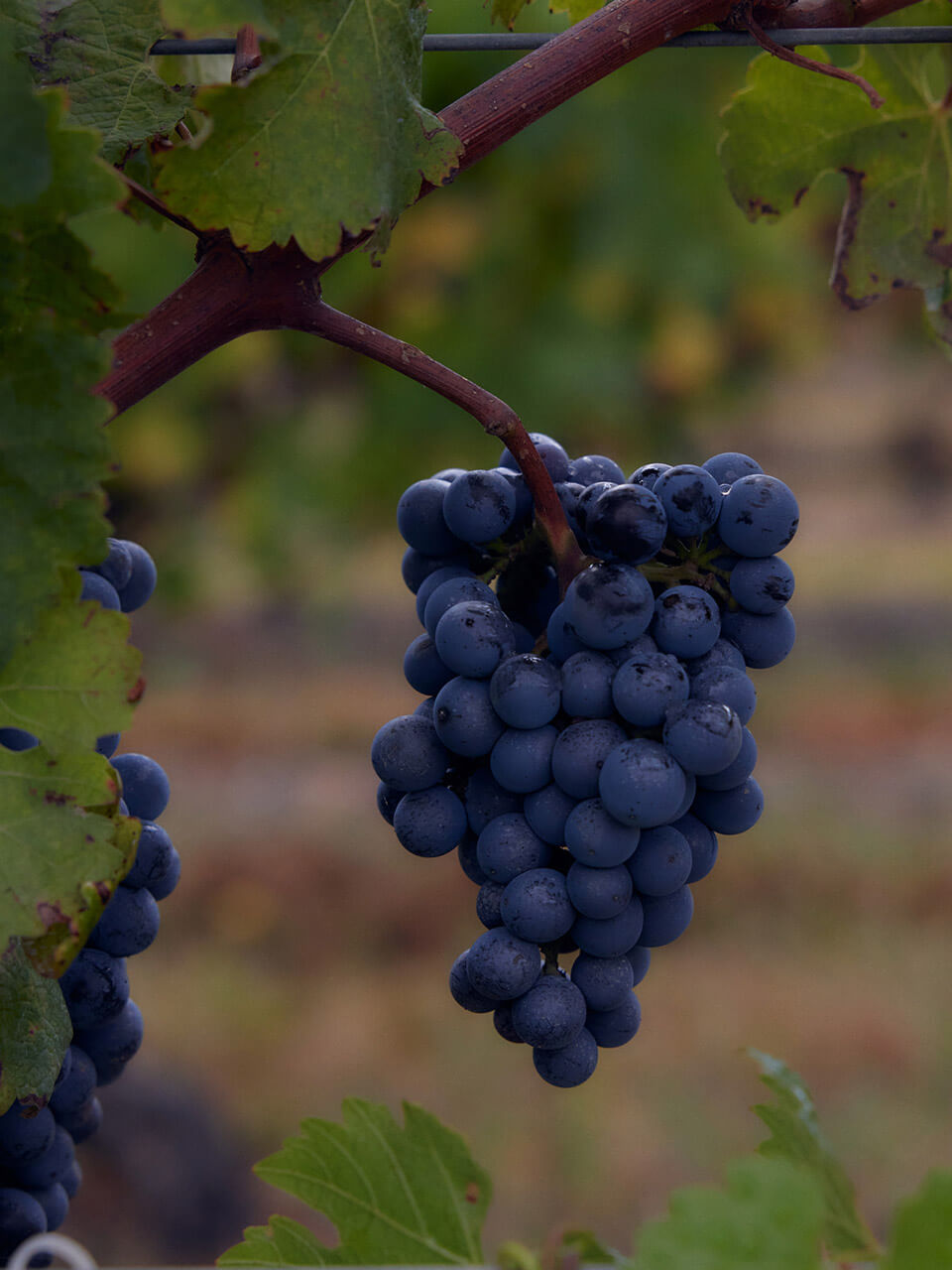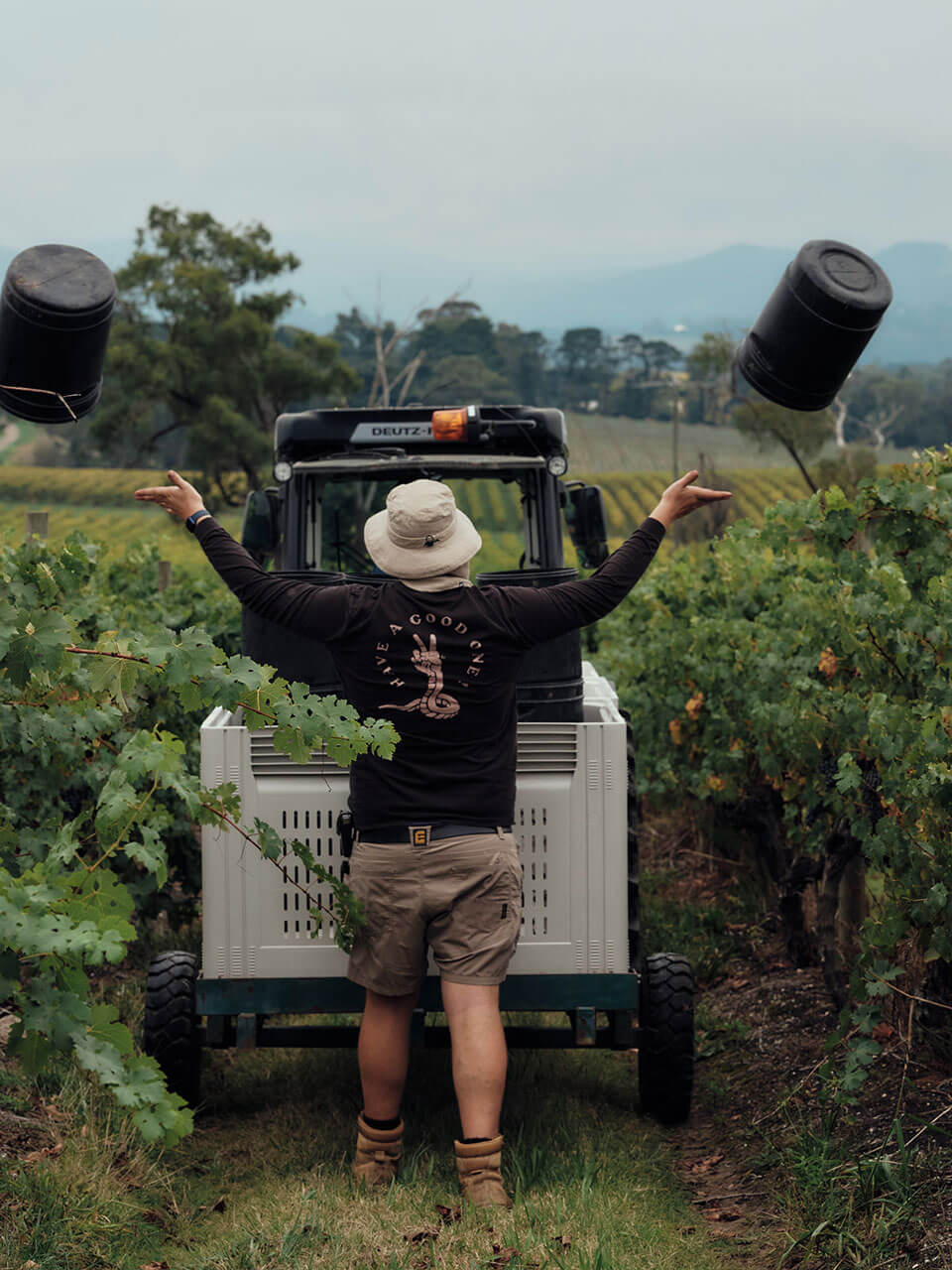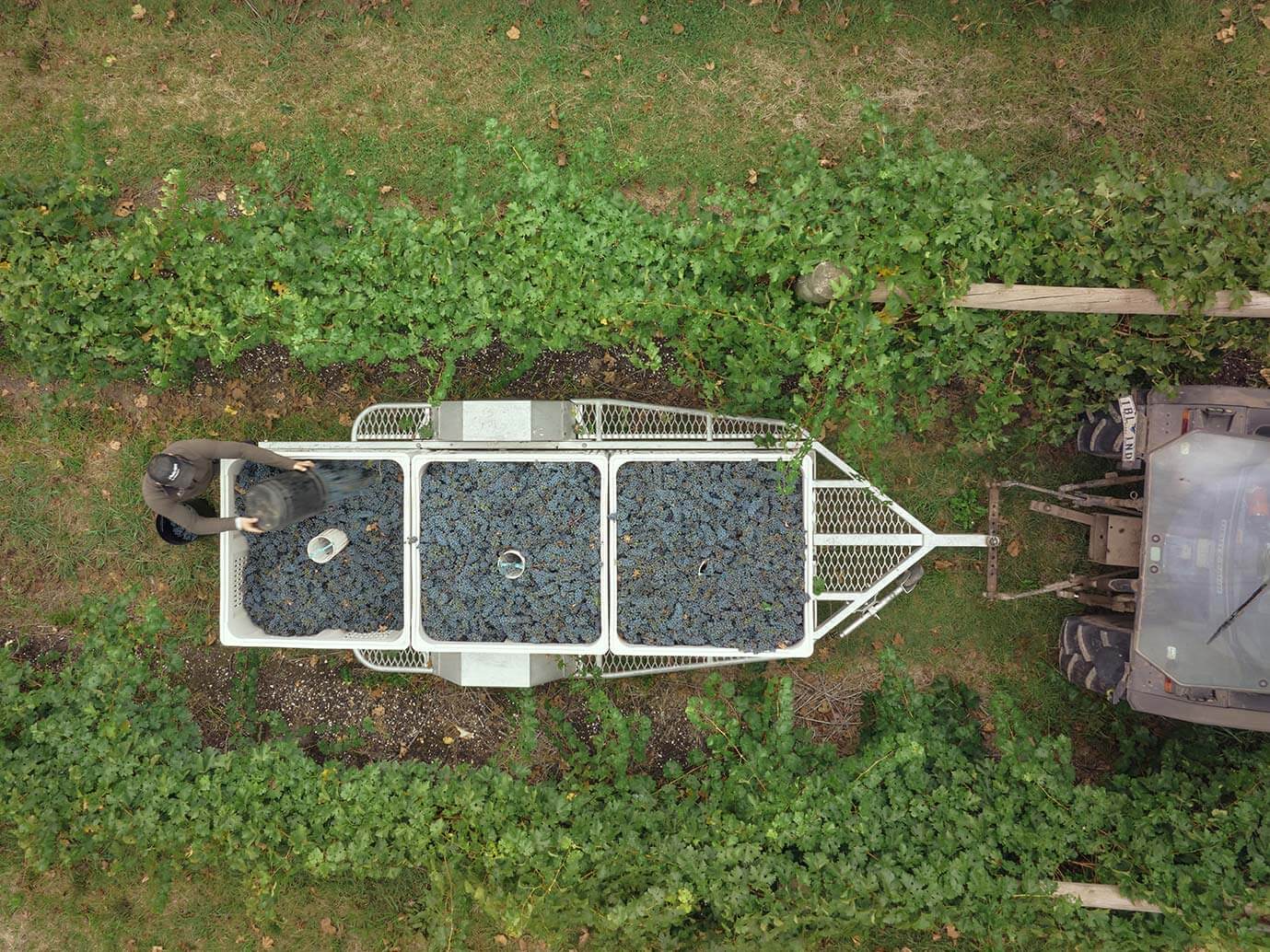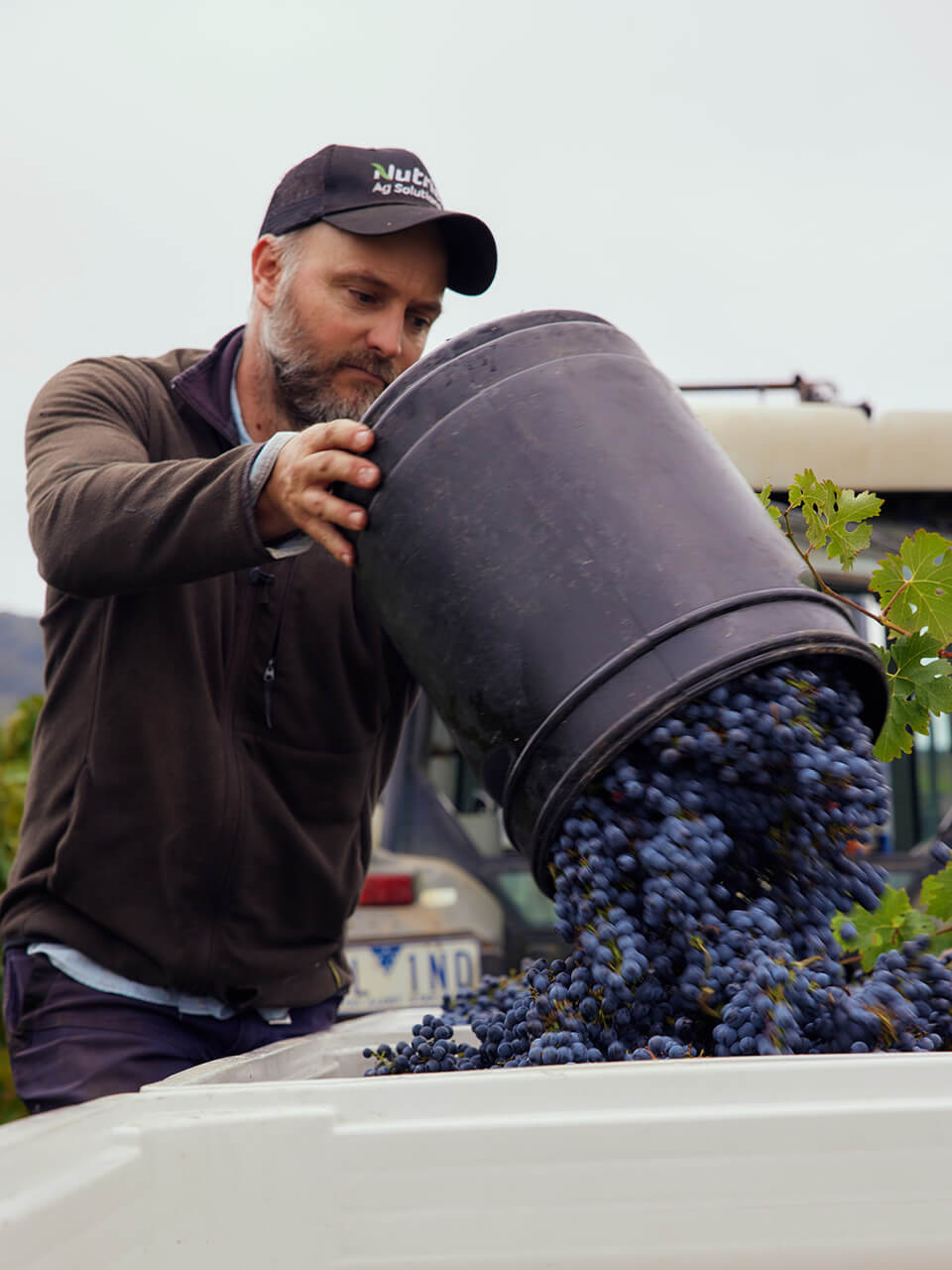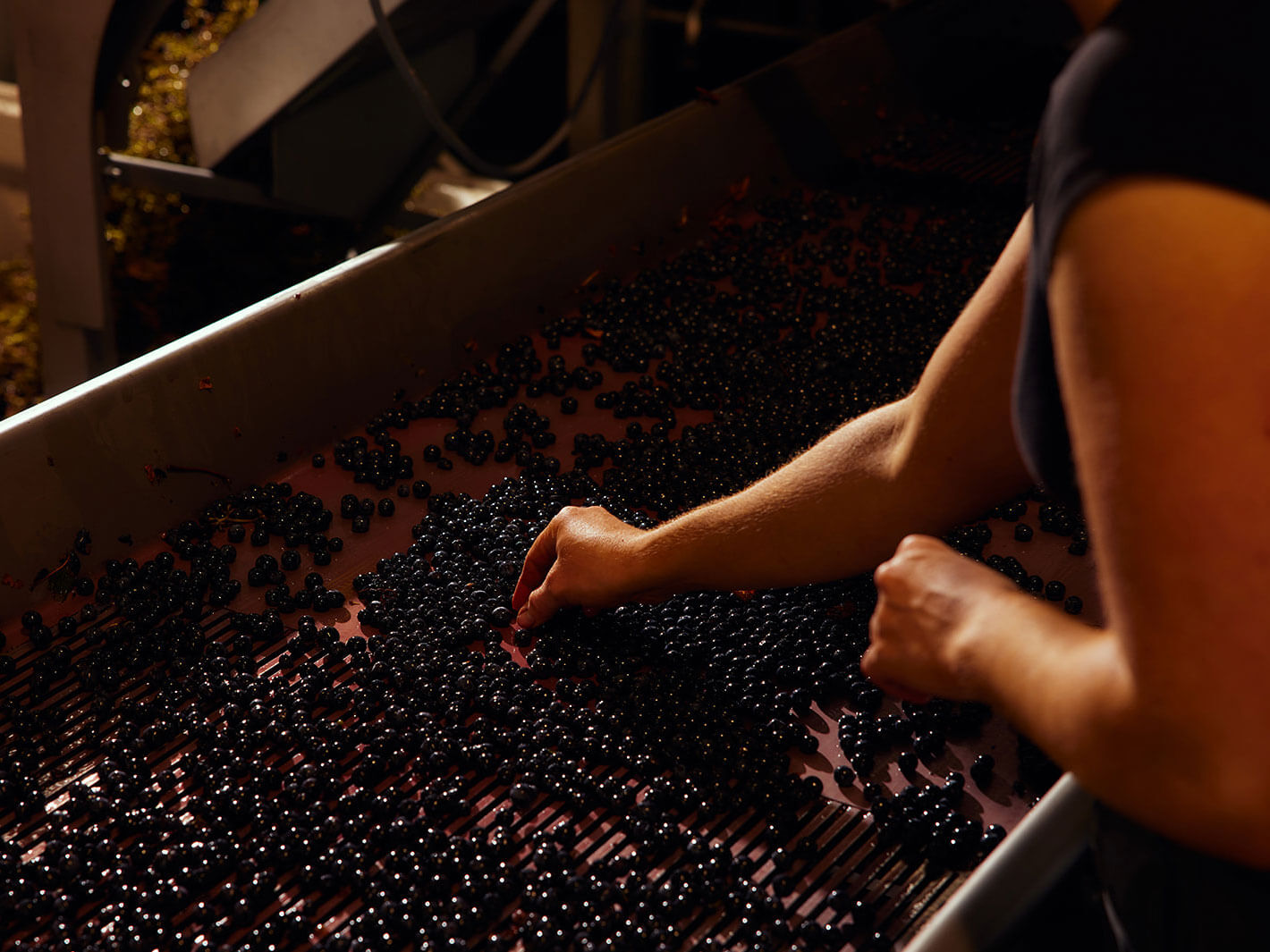Established in 1969 by Dr. Bailey Carrodus, the Yarra Yering vineyard emerged before the modern viticulture industry in Yarra Valley took shape, marking it as a true pioneer of modern Yarra Valley. With Andrew George at the helm of viticulture for more than a decade now, this dry-grown, 28-hectare historic vineyard is evolving with consideration of a changing climate and sustainable practices. It boasts an especially diverse array of grape varieties in the context of the Yarra Valley, from classic chardonnay and pinot noir, through to a number of the more exotic, including alvarelhão, tinta amarela, and sousao, to name a few. The site grows truly iconic wines, made today by Sarah Crowe, such as their Chardonnay, Pinot Noir, their ‘Dry Red Wine’ range, and their ultra-premium ‘Carrodus’ range.
“Dr Bailey Carrodus, Yarra Yering founder, started planting along the gentle slopes of the Yarra Valley in 1969”, says Andrew George. “He was a visionary and an incredibly talented vigneron. He had spent time travelling in France, Spain, Portugal and Italy prior to finding the now Yarra Yering site, and was searching for a piece of land that would be suitable for the wines he had grown to love.”
“We’re pretty fortunate at Yarra Yering to have such a wide range of varieties to work with and different years allow for each variety to shine in their own way.”
“Dr Bailey Carrodus, Yarra Yering founder, started planting along the gentle slopes of the Yarra Valley in 1969. He was a visionary and an incredibly talented vigneron.”
With recent plantings consisting of grenache blanc and aligoté – new to the Yarra Valley – Yarra Yering is continuing to pioneer viticulture in the region. George references their ‘Dry Red Wine No. 3’ as a bottle that captures this uniqueness, “We produce a number of Portuguese varieties, offering some of the most interesting plots we have the opportunity to play with, touriga naçional, tinta cão, tinta roriz, tinta amarela and alvarelhão. Originally planted for the production of fortified wines, we now use these in a red table blend, ‘Dry Red Wine No. 3’…”
“Those familiar with European wine regions often shake their heads at how we are able to grow such a diverse range of varieties on one continuous vineyard property because they are used to varietal monocultures.”
Yarra Yering is renowned for its dry-grown philosophy, eschewing irrigation to tap into the deep, natural resilience and quality of the vines. “We’ve been trialling the use of composts and mulch in the vineyard for a while now and have absolutely seen the benefits of water retention. Water is left in the soil, available to the vines, rather than evaporating from the soil surface. For a dry-grown vineyard, this has been really successful. We’ve seen a huge difference in the vines since employing this program, in both increased water retention and improved soil health.”
Cover crops in spring have also benefited the vineyard. “We’ve found that a diverse blend of oats, ryecorn, purple vetch, annual ryegrass, winter wheat, forage rape, leafy turnip, linseed, crimson clover, peas, chicory and tillage radish, has improved soil structure, increased organic matter and encouraged a happy, healthy ecosystem for increased biodiversity.”
“We’ve been trialling the use of composts and mulch in the vineyard for a while now and have absolutely seen the benefits of water retention. Water is left in the soil, available to the vines, rather than evaporating from the soil surface. For a dry-grown vineyard, this has been really successful. We’ve seen a huge difference in the vines since employing this program, in both increased water retention and improved soil health.”
“Recently we’ve also fenced off a main stormwater drain, employed goats to clean up the area and will replant with native vegetation to improve water quality that runs to the drain and protect the ground from erosion. We also planted a three-hectare native scrubland to encourage a healthy habitat for wildlife.”
Yarra Yering’s journey as a pioneering vineyard in the Yarra Valley is a compelling narrative of dedication. It stands as a vivid embodiment of how forward thinking viticulture and a connection to the environment can yield wines of exceptional character and depth, uniquely defining their place of origin.
The work in a vineyard is never complete. “When Dr Carrodus first planted the vineyard, he’d really found a perfect site with the desired aspect. Everyone was chasing these north-south facing slopes to maximise sunlight exposure on the vines. These days, there are some varieties that don’t cope so well with that all-day exposure so we’ve really thought about this when planting some of our newer blocks. Dr Carrodus had originally planted 30 acres of vine, but as we have expanded and made new plantings, we’ve considered orientation and planted east-west facing to offer shade from the harsh sun, avoid warm northerly winds, and ensure longevity in our viticulture.
George’s work has not only enhanced vineyard health but also fruit quality, and through continuous dialogue and shared trials with the winemaking team, led by Sarah Crowe, the vineyard’s practices are finely tuned to produce wines of superb balance, elegance, and precision.
“One block that we turned around very quickly was the Underhill Shiraz block. After years of drought it was in pretty bad shape and not producing enough fruit. We went back to basics to work on identifying any deficiencies in the soil and vines and worked towards bringing health back into the canopy. A targeted micro-nutrient foliar fertiliser program, compost, and mulch did the trick and the 2018 and 2021 have both won Champion Wine of Show at the National Wine Show of Australia.”
“I’m pretty lucky, it’s a pretty wonderful place to work. Acclaimed wines, a hardworking team, and a vast array of really successful plantings – it doesn’t get much better than that! The vineyard certainly has its challenges, but to nurture such an iconic piece of viticultural history that Dr Carrodus envisaged, is a pretty huge honour.”

